Motion or movement can be described by the following anatomical terms :
Flexion
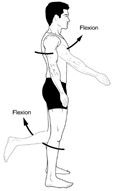
Extension
Extension is the straightening of a joint or the movement of two ventral surfaces such that they come to lie further apart.
Abduction and Adduction
Abduction is movement of a part of a body away from the midline in the coronal plane. For example, abduction of the arm is lifting the arm out sideways.
In the hand, the midline is considered to be along the middle finger. Thus, abduction of the fingers refers to the motion of spreading them out. In the foot, the axis of abduction is the second toe.
The thumb is a special case. Abduction of the thumb refers to anterior movement away from the palm. Adduction is the opposite of this movement.
Adduction is movement towards the middle of the body in the coronal plane.
Plantar/Dorsiflexion
Plantar/dorsiflexion: are used to describe movement of the foot at the ankle as the use of the terms ‘flexion’ and ‘extension’ is confusing. True flexion of the foot is straightening at the ankle, because this leads to two ventral surfaces coming closer together. This is however, somewhat confusing. For this reason, the term ‘plantar/flexion* is used to refer to the action of pointing the toes and dorsiflexion to refer to bending at the ankle such that the toes move towards the face.
Rotation – Medial and Lateral
Rotation: rotation is movement around the long axis of a bone. For example rotation of the femur at the hip joint will cause the foot to point laterally or medially.
Medial rotation: Medial rotation denotes movement towards median plane or inward rotation, medial rotation of arm at shoulder joint.
Lateral rotation: Lateral rotation denotes rotation away from the median plane or outward rotation, lateral rotation of arm at shoulder joint.
Supination/Pronation
Supination/pronation are special terms used to refer to rotational movements of the forearm, best thought of when the elbow is flexed to 90 degrees. Supination refers to rotation of the forearm at the elbow laterally, such that the palm faces superiorly. Pronation refers to an inward rotation, such that the dorsal surface of the hand is uppermost.
Elevation and Depression
Elevation: Raising or moving a body part towards the cephalic (head) end is termed as elevation.
Depression: Lowering or moving a body part caudally (toe) is termed as depression.
Circumduction
Circumduction: Combined movement of flexion, extension, adduction and abduction in a circular manner is termed as circumduction.
Protrusion and Retraction
Protrusion: It is the forward movement of a body part.
Retraction: It is the backward movement from protrusion.
Pronation and Supination
Pronation: It is the medial rotation of forearm so that the palm comes to face backwards.
Supination: It is the lateral rotation of forearm so that the palm comes to face anteriorly (forwards).
Inversion and Eversion Of Food
Inversion of foot: It is the movement that causes the plantar surface of foot to face inwards and downwards.
Eversion of foot: It is the movement that causes the plantar surface of foot to face laterally and downwards.
Opposition
Opposition: It is a combination of abduction, medial rotation and flexion. This movement characteristically occurs in the thumb.
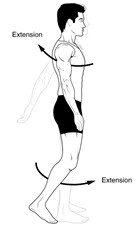
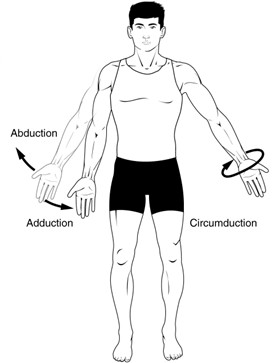
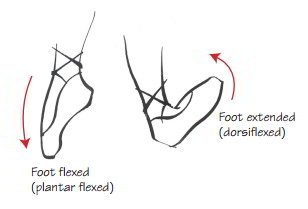
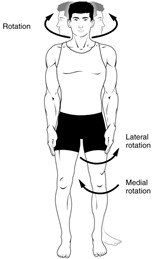

 (46 votes, average: 4.89 out of 5)
(46 votes, average: 4.89 out of 5)